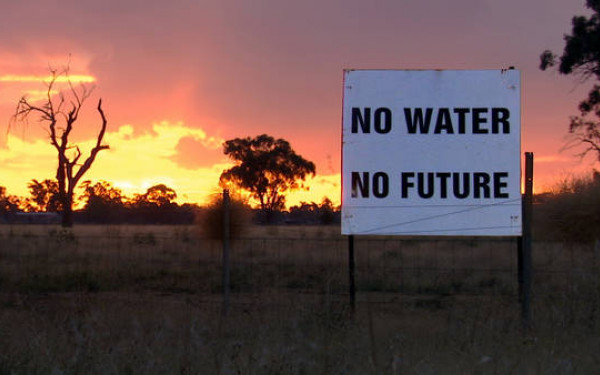Soil and Herbs Above Our Heads
Studying, Growing and Learning in Concordia’s Greenhouse
As university students, sunlight is hard to come by this time of year. The sun rising earlier and setting later now than during the summer months is worsened by the fact that we’re trapped indoors during daylight hours due to school and perhaps work.
From December to March, we ditch reading on the balcony for the flourescent lights of our school library and wilt like starved flowers into the wee morning hours. This is the time for the Hall Building’s oasis—which may sound like an oxymoron—to flourish.
“[There’s] fresh air, you know, with all these trees and sunlight so you don’t get Seasonal Affective Disorder, and [there’s] mad vitamin D […] and people can be very friendly so the atmosphere is very good,” said Concordia greenhouse social events coordinator Sheena Swirlz.
The greenhouse on the Hall Building rooftop is known for its inviting study space, but also has its roots in a number of urban and market gardening efforts across the city, benefiting the likes of local schools and food co-ops like the People’s Potato and Le Frigo Vert.
One of the literal ways the greenhouse does that is with its seeding project, where its members and interns meticulously watch and help grow 10,000 vegetable seeds during their very early stages. They then distribute the sprouts to community organizations for people to continue to grow and eventually eat.
“It starts as this tiny box of seeds that come in the mail and ends up with a plant on every single surface of the greenhouse and then I don’t see them again, but […] then they grow up and they produce food for people,” said greenhouse collective coordinator Jackie Martin.
In 2006, weighed down by maintenance costs and a mold problem, the greenhouse was to be torn down. But students involved in Sustainable Concordia and the Geography Department urged the university to salvage the space, and the glass structure atop the Hall Building survived, as well as everything inside it.
Sustainable Concordia went on to separate the space into two areas: one for growing plants, including fruits like papaya, vegetables and micro greens; the other, an area for socializing.
The space is composed of two of the many adjacent glass rooms that make up the structure. Plants shading and surrounding the seating area are nourished by sunlight pouring through the glass walls and ceiling.
On Mondays and Fridays, students can book the social space in the greenhouse from 5 p.m. to 7 p.m. for events or gatherings like club meetings, dinner parties and film screenings. So at night, during one of their “5 à 7,” those plants may be entwined with lights that follow the backdrop of the city’s skyline.
“It’s just a really nice, beautiful space that you can use for yourself,” says Martin.
Farming in the City
Since gaining its 12-cent student fee levy and becoming its own collective last spring, the Hall Building’s greenhouse has initiated a number of new endeavours, including an increase in its weekly events and workshops.
The fee levy constitutes the group’s main revenue stream and amounts to about $75,000 a year. Before, it relied on grants and a five-cent levy as part of Sustainable Concordia.
Other revenue includes its City Farm School internships, which cost $450, but help cover “two workshops, as well as the training you will receive from the CFS coordinators,” according to the CFS website.
The CFS is “an initiative to develop partnerships and expertise in urban agriculture on the island of Montreal,” according to its website. It fulfills its mission by working with the English Montreal School Board, building gardens in their school yards and hosting before and after-school workshop teaching students basic urban gardening skills.
“One of the goals of these school yard gardens is to help build the students’ confidence and give them the opportunity to make a difference in their schools and in their own lives,” said school yard gardens coordinator Marcus Lobb at this year’s CFS launch on Thursday.
Part of the project includes the Loyola City Farm, a vegetable garden at the Loyola campus. The farm is being expanded in the upcoming growing season with a 70- by 100-foot plot “which will double what he have right now,” announced Martin at the Thursday launch.
The new plot will allow the city farm to grow all of the People’s Potato’s garlic, ridding them of the need to buy garlic from outside Canada.
Also part of the collective’s initiatives is a series of workshops held every second Thursday, which range from building “living necklaces” made of plants, to moss grafitti, to zine-making, to mushroom growing.
“People always have a lot to contribute to every workshop,” said Swirlz, citing the mushroom growing workshop as an example with people bringing their own tricks to the table.
Swirlz is one of the collective’s five part-time staff members. The two other staff members work full-time.
In the growing section of the greenhouse, in the winter, the greenhouse’s members grow microgreens—small trendy leaf vegetables used to enhance a meal’s look and taste—as well as salad greens, beans and house plants, which are sold at the popular house plant sale every year. Then, there are the perennials—plants that live over two years—of the greenhouse’s tea atrium.
“It’s so about the community aspect, it’s not closed-off, it’s not about the production or the money-making factor—we serve the community and get people involved,” said Swirlz.
Have you seen our Link Live Session in the Concordia greenhouse? Watch the Montreal folk trio Street Meat play “Le Mésadapté” among the greenery.

_900_443_90.jpg)
_600_832_s.png)

__600_375_90_s_c1.jpg)

(WEB)_600_375_90_s_c1.jpg)
_600_375_90_s_c1.jpg)